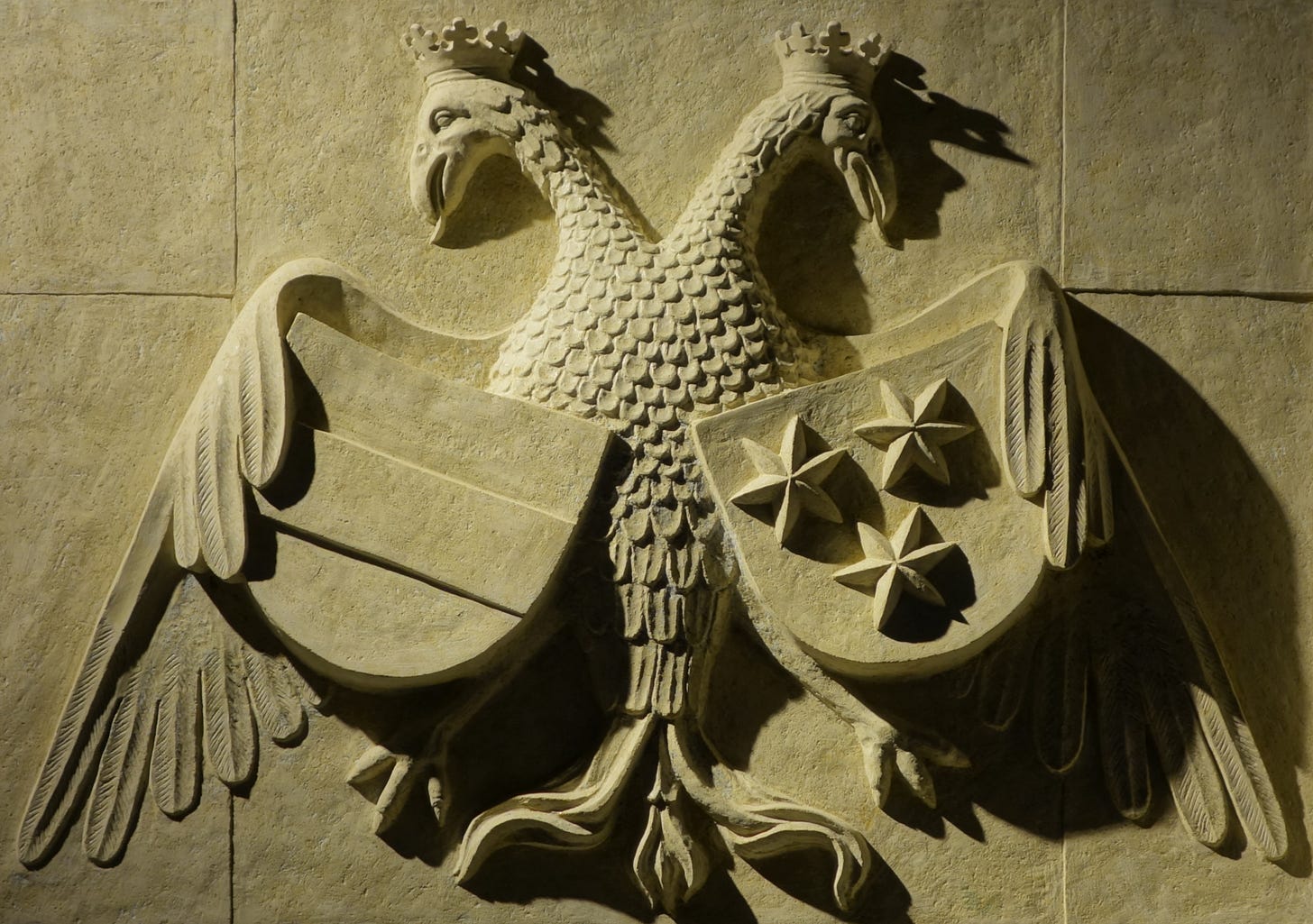Under The Double Eagle
Signs of a Sovereignty That Still Binds

God preserve, God protect,
Our Emperor, our Country!
Powerful through the support of the Faith,
He leads us with a wise hand!
Let us defend the Crown of his fathers,
Shielding it from every foe.
𝄆 Forever with the Habsburg Throne,
Austria's fate remains united. 𝄇
II
Devout and honest, true and open,
Let us stand for right and duty!
Let us, if needed, with joyous Hope,
Go courageously in the battle!
Mindful of the laurel wreaths,
That the army so often wove itself.
𝄆 Treasure and Blood for Our Emperor,
Treasure and Blood for Our Fatherland! 𝄇
III
What was wrought by the diligence of citizens,
May the soldier's power faithfully protect!
With cheery weapons of mind,
Arts and Science may triumph!
Blessings be granted into the Land,
And its fame match the blessings.
𝄆 God's sunshine in peace,
On a happy Austria! 𝄇
IV
Let us always stand together,
For in unity there is power!
With our combined strength,
The difficult is easily overcome!
Let us, brotherly united,
Go towards the same goal.
𝄆 Hail to the Emperor, Hail to the Empire,
Austria will forever stand! 𝄇
This is indeed a lovely national anthem. The countries who sang it before 1918 were all of what are now Austria, Hungary, Czechia, Slovakia, Slovenia, Croatia, and Bosnia-Herzegovina, with chunks of present-day Ukraine, Poland, Romania, Serbia, Montenegro, and Italy. This Austro-Hungarian Monarchy had a number of problems endemic to it, to be sure, of which the top was clearly the nationality issue – most definitely in Hungary, where the dominant ethnos was struggling to “Magyarise” the minorities, who together made up a majority. But none were insoluble, despite the maunderings of the victorious Nationalists of 1918, who naturally magnified them to justify their own treasonable activities during and after World War I.
That terrible year not only saw a prospective Saint driven from the country’s throne, it saw the formation of successor states whose new rulers unconsciously prepared the way for the bloodbath of the Second World War, the living death of the Soviet Bloc, and the lingering instability and difficulty of the region to-day. As against their sloganeering, all the Habsburgs had to offer were two things: legitimate authority exercised out of love for their subjects, and a system that actually worked.
To-day, when one travels through the former Monarchy – from Tyrol to Transylvania, from Czechia to Croatia – he encounters a remarkable similarity of culture and attitudes that transcends the national boundaries in place since 1918. For all that Austria-Hungary was an incredible mishmash of cultures and religions, it had a remarkable uniformity; this was a product of the dominance of Catholicism, and the House of Habsburg. Despite the disastrous aftermath of independence, World War II, and Communism, the mark of the double eagle remains everywhere in those lands over which it once presided. It is my contention that those countries shall never be mentally whole or psychologically stable until some form of unity presided over by the Head of the House is restored, for all that it cannot be the old Austria-Hungary. So let us look at some remnants of the Monarchy to-day, and then speculate as to what the future might hold.

